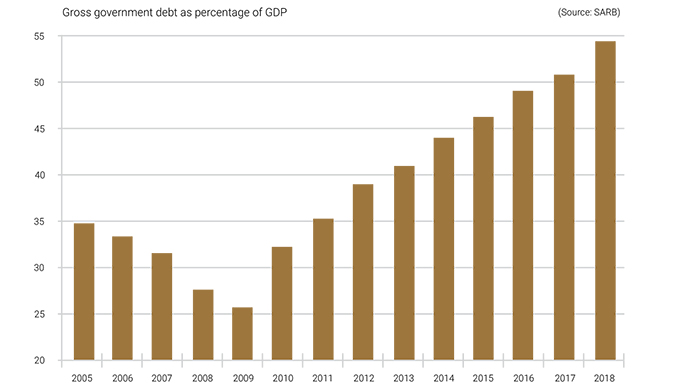ROELOF BOTHA
It is difficult to imagine a prosperous and stable society without good roads. Whether a traveller needs to be in time for work, or to drop off children who are writing exams or to perform an emergency operation on a patient, a good road is nothing short of a blessing.
In fact, the development of civilization is directly linked to the development of transport and the expression via vita (“the road is life”) was a common slogan during the era of the Roman Empire.
Urban highways
& e-tolls go
hand-in-hand
No roads, no
economy
In the absence of an adequate and well-maintained road network, employees would not be able to commute, food and medicine would not be readily available, and many industries would simply cease to exist. Without roads, the world economy would be a small fraction of its current size and standards of living would resemble those of the dark ages.
Like most things in life, however, roads are not free. Roads mostly exhibit the classic characteristics of public goods, which require fiscal intervention through some form of taxation, as is the case with other types of infrastructure, such as water and electricity supply.
In certain cases, it is possible to generate the revenues necessary for the particular mode of infrastructure via user charges. Toll roads, electricity meters and airport departure levies serve as common examples.
A person who, for some bizarre reason, refuses to pay airport taxes, will not be able to purchase a flight ticket and will not be able to fly. Someone who refuses to pay an electricity account will be disconnected. Refusal to pay tolls at a manual tolling booth will leave a traveller stranded.
It is fairly logical therefore, that the “user pays” principle, where applicable, is universally applied by governments in most of the world’s jurisdictions. In transport, user charges are mostly in the form of road tolls, vehicle license fees or a fuel tax and modern, urban road networks usually require some combination of these three options.
Huge costs
involved
The costs associated with road-building are intimidating and require thorough cost-benefit analysis.
In a World Bank study of road building costs in 93 different countries conducted in 2000, the average cost of a two-lane paved road – one lane per traffic direction – was found to be more than R18m per kilometre.
A 2017 report by the Australian Government stated the cost per lane kilometre of urban roads at R55m.
At this rate, it would cost more than R9 trillion to pave all of South Africa’s urban roads – almost twice the country’s total GDP!
Broad-based consensus should therefore exist on three important dimensions that are crucial to the debate on urban road financing: roads are crucially important to citizens and the economy; road users should pay for the privilege of good roads; and a road network is extremely expensive.
In attempting to find an answer to the vexed question of financing the maintenance and expansion of the road network in Gauteng, it is useful to keep two alarming statistics in mind:
More than 1 000 new vehicles are registered in Gauteng every single working day of the year and the total Gauteng vehicle population currently stands at more than 4.8 million.
Gauteng remains the “big apple” of South Africa and generates the lion’s share of the country’s total GDP, outside of the primary sectors. It stands to reason that a sub-optimal road network will restrict South Africa’s ability to grow its economy at a rate that is commensurate with the needs of an expanding and rapidly urbanising population.
Advantages of
e-tolling
Over the past decade, various authoritative studies have been conducted that confirm the superiority of the system of electronic tolling for Gauteng’s highways, including substantial time savings for road users. In theory, it is abundantly clear that the system of e-tolling on Gauteng’s highways is superior to any other funding model.

No alternatives
In practice, unfortunately, the debate on alternative funding models has become incongruous, mainly due to the parlous state of South Africa’s public finances. Due to a combination of lethargic economic growth, huge losses at key state-owned enterprises, policy uncertainty and low levels of business confidence, two of the three most authoritative international credit ratings agencies have downgraded South Africa’s sovereign bonds to sub-investment grade (so-called “junk” status).
Only Moody’s Investor Services still classifies the country’s bonds as investment grade, but this status is hanging by a thread as a result of an increasing public debt/GDP ratio.
The bottom line is simply that there are no alternatives to toll fees. It would be quite silly to start constructing manual toll booths along all of Gauteng’s highways and on- and off-ramps.
Unless adequate e-toll revenue is secured, the condition of, and congestion on, Gauteng’s roads will worsen to the point that urban commuting will become nigh impossible during daytime and even beyond, with negative effects on the whole of the economy.
Dr Roelof Botha, Lecturer (part-time), GIBS
BUILDING SOUTH AFRICA THROUGH BETTER ROADS
HELLO GUATENG 2019